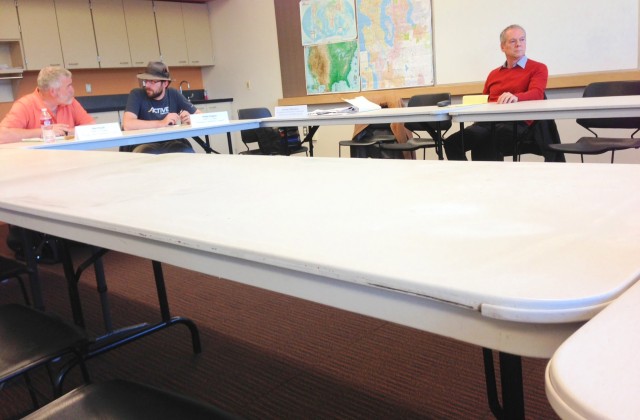Other People’s Housing: Seattle’s Debate Continues
Deciding where to live is a decision that each of us has had to make at one point in our lives. Should we live in a house or an apartment? What part of town should we live in? Do we want a yard or not? Our choices are often limited by our income and our expenses, and, for some, a search for housing can present very few choices because of price. What’s unusual about Seattle’s debate about housing is that it is about trying to decide where and how other people live.
I attended the North District Council meeting where I engaged in a limited debate and question and answer period with John Taylor of One House One Lot. Taylor continues to insist in the face of the facts that not only is everything the same today when it comes to small-lot development, but that Smart Growth Seattle wants to keep it that way. Taylor says, “We have no axe to grind. We’ve already had this happen to us, we just want to stop it from happening everywhere else.” For Taylor “this” means someone new moving into the neighborhood.
I took the time to explain why our Initiative, the passage of the 80 Percent Rule addresses every single one of the issues Taylor’s group brought up last year when they persuaded the Council to pass a legislation ending certain aspects of small-lot development.
- It’s predictable—the 80 Percent Rule allows neighbors to size up their own block and figure out exactly which lots have development potential. Get the square footage of the lots, add together, divide by the number of lots and then multiply by .80 and you’ve got a pretty good sense of what lots are buildable.
- It’s scalable—the other complaint last year was that “these houses are too big!” The 80 Percent Rule has a height limit of 22 feet, shorter than the height limit of regular single-family lots. Taylor continues to insist that our request to keep heights at 22 feet is intended to allow developers to “slip in a third floor.” It’s hard to understand who would live in a four-foot tall floor (the number on the table recently was 18 feet), but perhaps Taylor is worried about Leprechauns moving into the neighborhood. Additionally, our proposal requires set backs, and Taylor’s groups saying that somehow those wily developers will find a way around that too.
- Rhyme and reason—one final issue always brought up was that obscure means were used to create buildable lots out of thin air. But the 80 Percent Rule has a minimum of 2000 square feet for any lot and it is buildable by virtue of its relation to other lots. The historic parcel designation is something that is already off the table, and the proposal from DPD eliminates other designations as well.
But all this is in response to what Taylor’s group thinks about other people’s housing and how it gets built. One neighbor said that building new homes was simply “incremental developer gamesmanship.” That’s it. It’s not about trying to find homes for people that want them, creating jobs and work for people that build them, and adding vitality to the city. Its about not liking where other people live.
It’s important to have these conversations in the neighborhood and I am glad I was invited. But the discussion is still largely about “what this does to me,” rather than “what effect does this have on the overall community.” One neighbor, though, did speak to change.
“As long as people want to live here things are going to change,” she said. “And shouldn’t we be trying to shape that change as long as it’s going to happen.” Yes, we should.
Want to talk about this issue more?
WHAT: Micro-housing development discussion
WHEN: Monday, May 6, 6:00 p.m. – 8:00 p.m.
WHERE: Seattle First Baptist Church
Fellowship Hall (downstairs), 1111 Harvard Ave. (on First Hill)
WHO: Seattle City Councilmembers and Council staff
Representatives from communities and neighborhoods
Representatives of micro-housing developers


